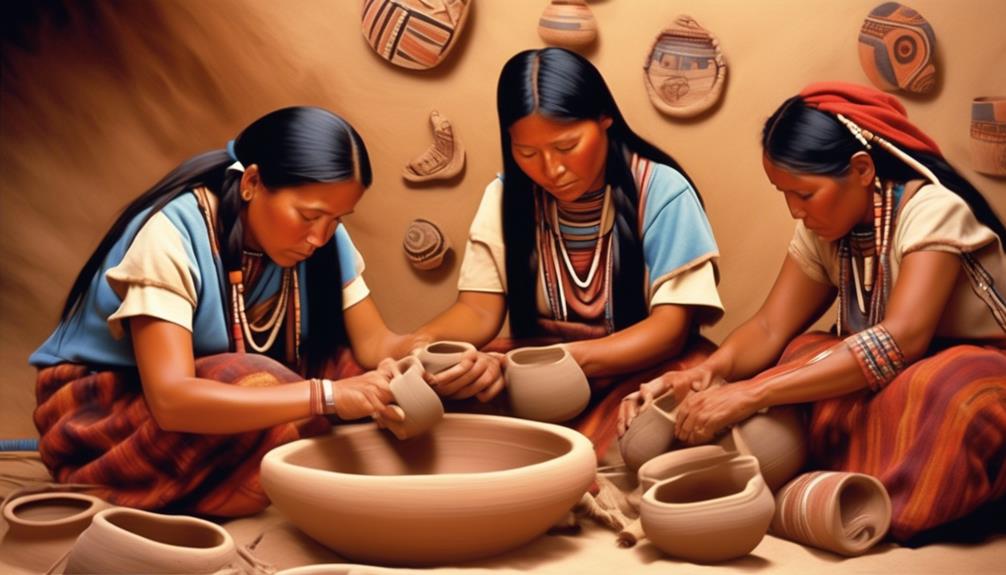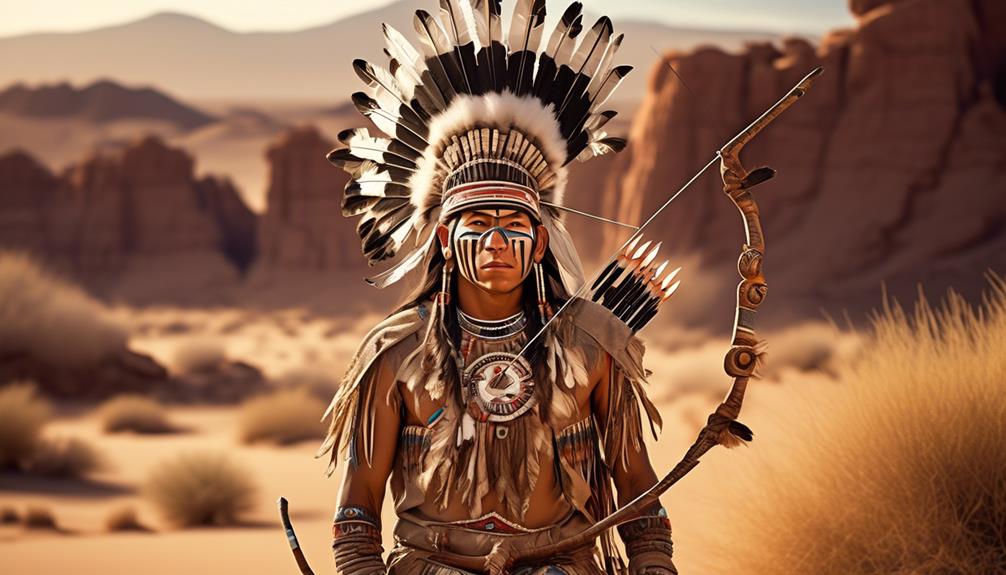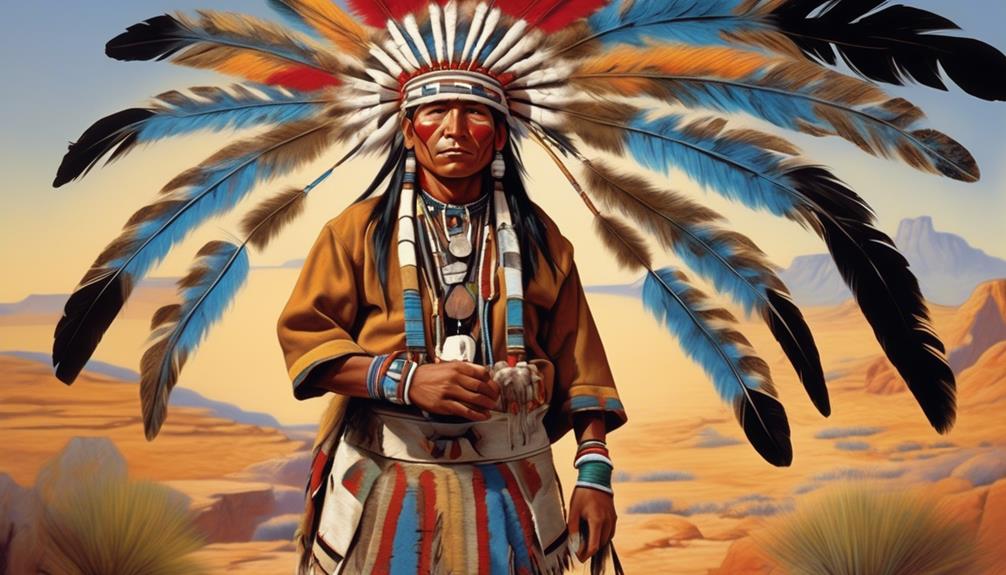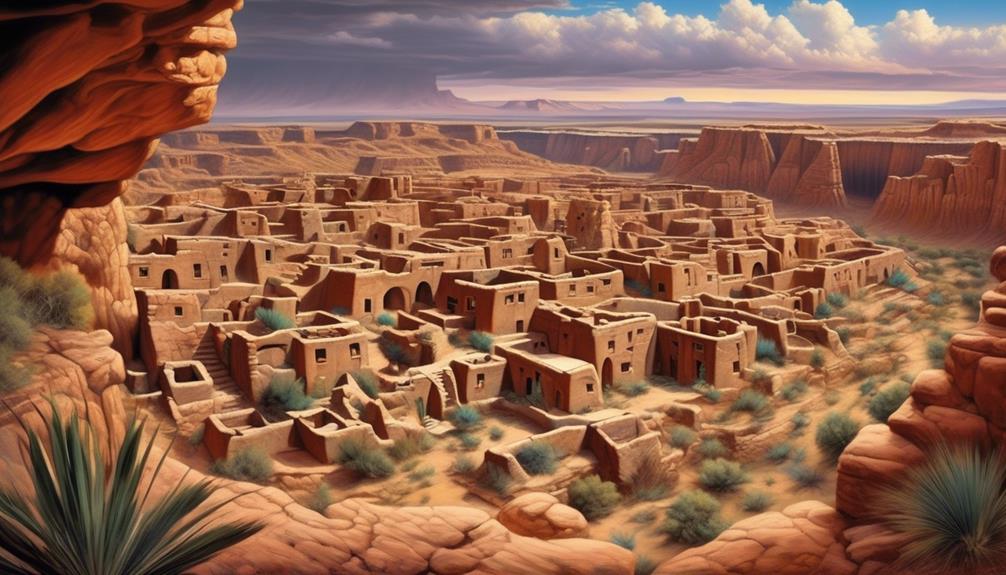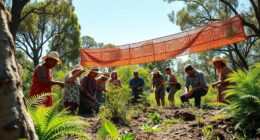Exploring the roles and responsibilities of women in the Hopi tribe, it is clear that their contributions are essential, much like the foundation of a pueblo.
From daily tasks to ceremonial duties, the women of the Hopi tribe play a crucial role in upholding the traditions and cultural practices that have been passed down through generations.
But there is much more to uncover about the multifaceted roles and significance of these women within their community.
Key Takeaways
- Cooking, cleaning, and childcare are central daily responsibilities for women in the Hopi tribe, emphasizing the importance of maintaining a tidy and welcoming home environment.
- Women play vital roles in ceremonial rituals, crafting traditional attire and engaging in rhythmic dances and chants to connect the earthly realm with the spiritual world, ensuring the continuity of cultural practices.
- Hopi women actively preserve and safeguard their traditional cultural practices, recognizing the intrinsic value of their tribal traditions and fostering a strong sense of community and belonging.
- Women in the Hopi tribe actively participate in community decision-making, working towards consensus and ensuring that choices align with traditional cultural practices and values, prioritizing the overall well-being and harmony of the tribe.
Daily Responsibilities and Household Duties
In Hopi society, the daily responsibilities and household duties are intricately woven into the fabric of community life, reflecting the values of cooperation and interdependence. Cooking is a central aspect of women's daily responsibilities, with traditional methods and recipes being passed down through generations. The preparation of meals often involves the use of homegrown produce, emphasizing the significance of gardening in Hopi households.
Cleaning is also a vital task, as the maintenance of a clean and orderly home is essential for the well-being of the family. Women take great pride in ensuring that their homes are tidy and welcoming spaces.
In addition to cooking and cleaning, childcare is a fundamental duty for women in the Hopi tribe. The nurturing and upbringing of children are regarded as communal responsibilities, with extended family and community members often playing a role in the care and guidance of the younger generation. This collaborative approach to childcare aligns with the overarching ethos of cooperation within the Hopi community.
Participation in Ceremonial Rituals
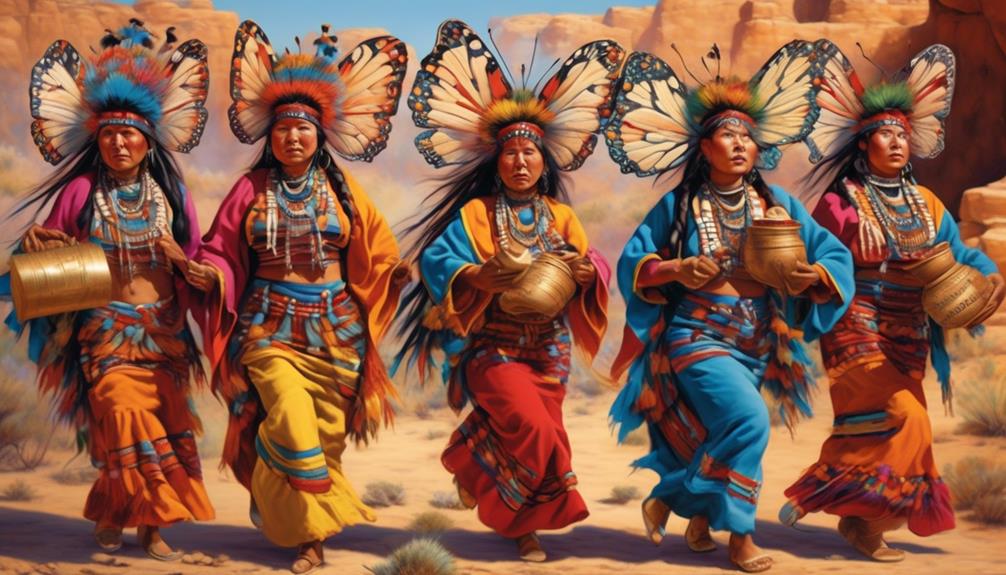
Engaging in ceremonial rituals, women of the Hopi tribe actively participate in preserving and passing down their cultural traditions, embodying the interconnectedness of their daily responsibilities and the spiritual practices that define their community.
- Ceremonial Attire: Women meticulously craft and adorn themselves in traditional attire, which includes colorful shawls, embroidered moccasins, and intricately woven sashes, symbolizing their deep respect for the ceremonial events.
- Spiritual Significance: Through their involvement in rituals such as the Powamu, Niman, and Snake Dance, women play vital roles in connecting the earthly realm with the spiritual world, emphasizing the importance of their spiritual responsibilities.
- Active Participation: Women engage in rhythmic dances and chants, utilizing their voices and movements to invoke blessings and express gratitude to the divine forces, demonstrating their active involvement in upholding the spiritual heritage of their tribe.
- Cultural Preservation: By actively engaging in ceremonial rituals, women ensure the continuity of their cultural practices, passing down ancient traditions to younger generations, fostering a sense of belonging and perpetuating the unique identity of the Hopi tribe.
Preservation of Traditional Cultural Practices
With a deep sense of responsibility, Hopi women actively uphold and safeguard their traditional cultural practices, ensuring the continuity of their rich heritage for future generations. Cultural preservation is paramount to the women of the Hopi tribe, as they recognize the intrinsic value of their tribal traditions. Through their dedicated efforts, these women play a vital role in maintaining the spiritual, social, and artistic customs that have been passed down through generations. They actively engage in activities such as pottery making, weaving, and ceremonial practices, all of which are deeply rooted in the history and identity of the tribe.
The preservation of traditional cultural practices isn't only a way of honoring their ancestors but also a means of fostering a strong sense of community and belonging among the Hopi people. By actively participating in and perpetuating these traditions, the women of the Hopi tribe ensure that their cultural heritage remains vibrant and relevant in the modern world. Their commitment to preserving tribal traditions serves as a testament to the enduring strength and resilience of the Hopi culture.
Role in Community Decision-Making

Hopi women play a central role in shaping community decisions, leveraging their collective wisdom and experience to contribute to the overall well-being and harmony of the tribe. Their involvement in community leadership and the decision-making process is instrumental in upholding the values and traditions of the Hopi Tribe.
- Consensus Building: Women actively participate in discussions and deliberations, working towards consensus within the community. Their ability to bring people together and find common ground is crucial in decision-making.
- Preservation of Cultural Values: Women ensure that community decisions align with the traditional cultural practices and values of the Hopi Tribe. Their deep understanding of these customs is vital in guiding the direction of the tribe.
- Inter-Generational Knowledge Sharing: Hopi women facilitate the transfer of knowledge from older generations to younger members, ensuring that decisions are informed by the collective wisdom of the tribe's history and experiences.
- Community Well-being: Women prioritize the well-being of the community in decision-making, considering the impact of choices on the overall harmony and prosperity of the tribe.
The active involvement of Hopi women in community decision-making reflects their pivotal role in preserving the cultural heritage and fostering unity within the tribe.
Passing Down Traditional Knowledge
Passing down traditional knowledge involves actively engaging in inter-generational knowledge transfer, ensuring the preservation of the Hopi Tribe's cultural heritage and values.
Within the Hopi Tribe, the transmission of traditional knowledge occurs through a variety of teaching techniques, including storytelling, hands-on demonstrations, and participatory learning experiences. Elders play a pivotal role in this process, serving as the primary educators and repositories of ancestral wisdom.
Through intergenerational learning, younger members of the tribe acquire essential skills, cultural practices, and spiritual beliefs, fostering a deep connection to their heritage. This transfer of knowledge isn't only about imparting information but also about instilling a profound understanding of the tribe's customs and rituals.
It creates a sense of continuity and belonging, reinforcing the cohesive fabric of the Hopi community. By upholding these teaching traditions, the Hopi Tribe ensures that its cultural legacy endures, enriching the lives of future generations and perpetuating the profound wisdom of their ancestors.
Frequently Asked Questions
What Specific Tools and Techniques Do Hopi Women Use in Their Daily Responsibilities and Household Duties?
In our daily responsibilities and household duties, Hopi women use traditional tools and techniques passed down through generations. These include pottery making, weaving, and farming using traditional methods.
These practices are essential for cultural preservation and are influenced by modern aspects of life. Hopi women are dedicated to upholding these traditional practices, which are integral to the community's way of life.
How Do Hopi Women Prepare for and Participate in Ceremonial Rituals, Such as the Katsina Dances?
In preparing for and participating in ceremonial rituals like the katsina dances, Hopi women play a crucial role. They actively engage in ceremonial preparation, ensuring that traditions are upheld and cultural preservation is maintained.
Through their participation, they pass on traditional knowledge to the younger generation, fostering a sense of continuity and community cohesion.
Their involvement in these rituals reflects the deep significance of women in the preservation of Hopi cultural practices.
What Measures Do Hopi Women Take to Preserve Traditional Cultural Practices in the Face of Modern Influences?
In the face of modern influences, cultural preservation becomes our top priority.
Hopi women actively engage in safeguarding our traditional practices by passing down knowledge through oral storytelling, teaching younger generations, and participating in ceremonial rituals.
The constant adaptation to modern challenges necessitates a delicate balance between upholding our heritage and embracing change.
Our commitment to preserving our cultural identity remains unwavering, ensuring our traditions endure for generations to come.
What Role Do Hopi Women Play in Community Decision-Making, Particularly in Regards to Issues Affecting Women and Children?
In our community, Hopi women play a crucial role in decision-making, particularly concerning issues affecting women and children. Women's leadership is fundamental in shaping policies and advocating for the empowerment of our community.
Through their advocacy and active involvement, they ensure that the voices of women and children are heard and considered in important community decisions. This exemplifies the significance of women's influence and their commitment to the well-being of our community.
How Do Hopi Women Pass Down Traditional Knowledge to Younger Generations, and What Specific Teachings Are Emphasized in This Process?
Passing down traditions and cultural teachings is crucial for generational knowledge and cultural preservation. Hopi women play a pivotal role in this process. They emphasize specific teachings related to traditional practices, household responsibilities, and ceremonial participation. Through this, they ensure the continuity of their community's cultural heritage.
Their active involvement in community decision-making further underscores their dedication to preserving and passing on their cultural legacy.
Conclusion
In conclusion, the women of the Hopi tribe played vital roles in daily responsibilities, ceremonial rituals, preserving cultural practices, participating in community decision-making, and passing down traditional knowledge.
While some may argue that their roles were limited, it's important to recognize the significant impact they had on the preservation and continuation of the Hopi culture.
Their contributions were essential to the overall well-being and sustainability of the tribe.
